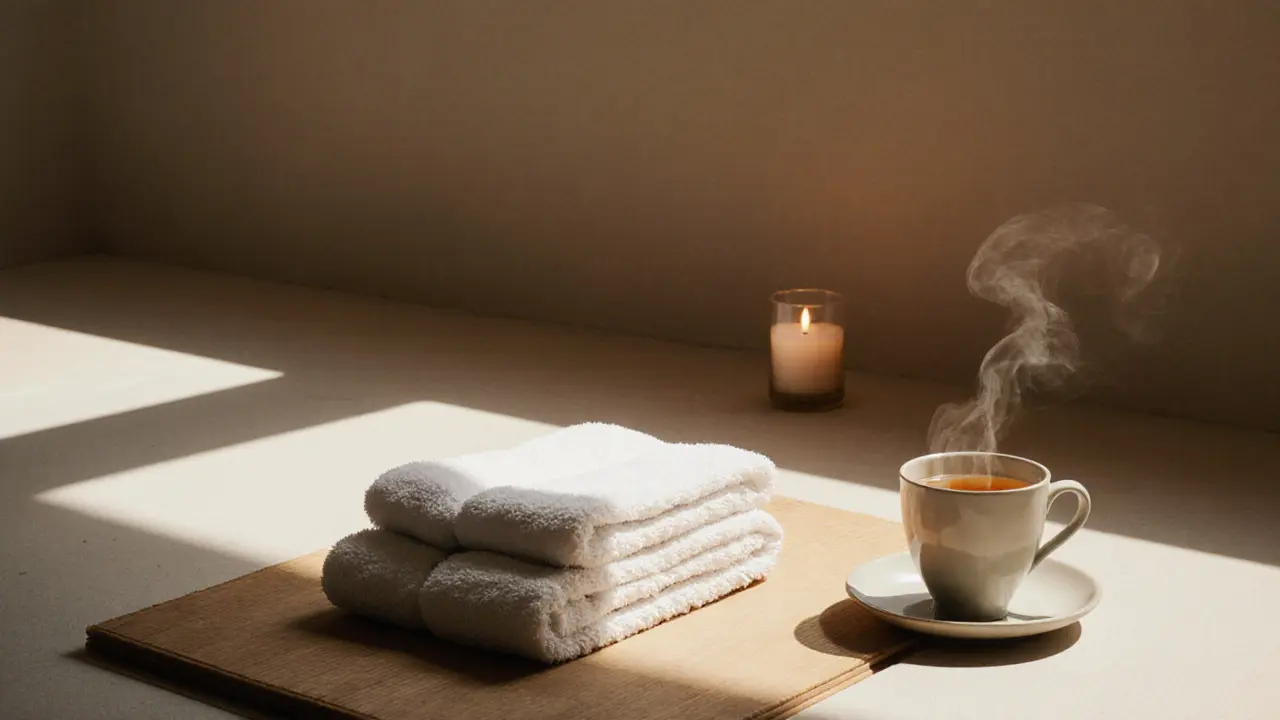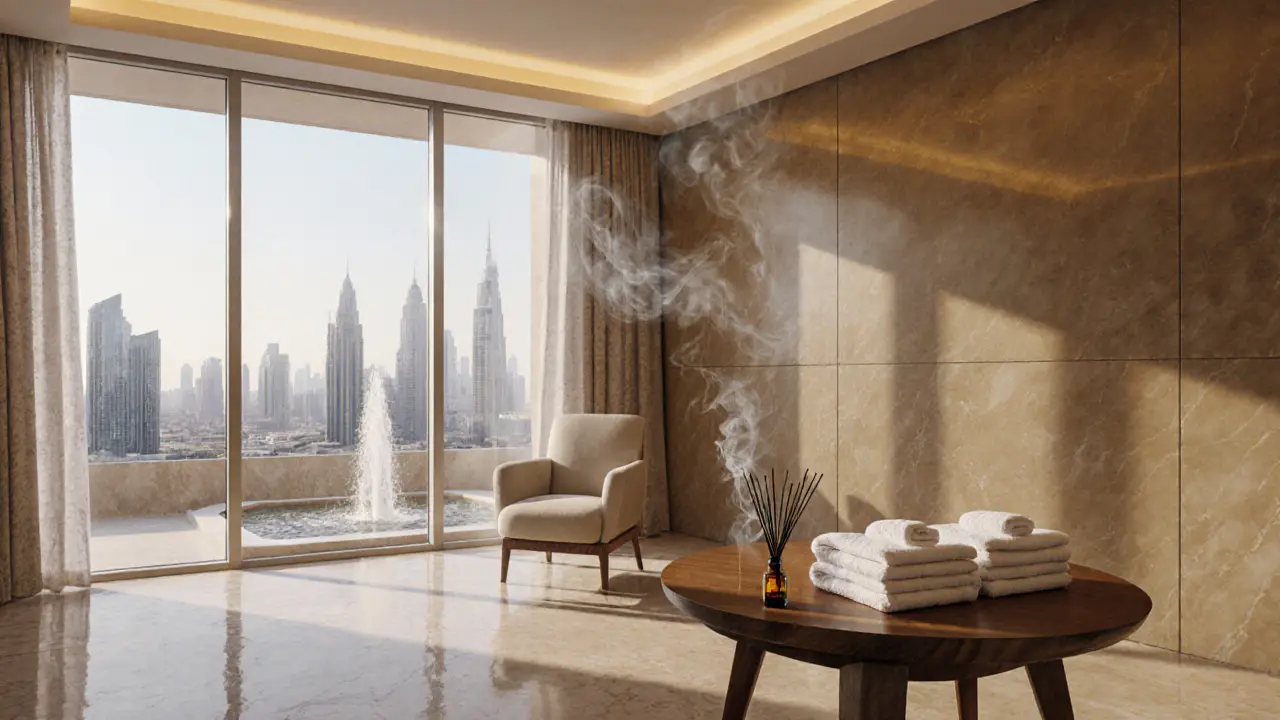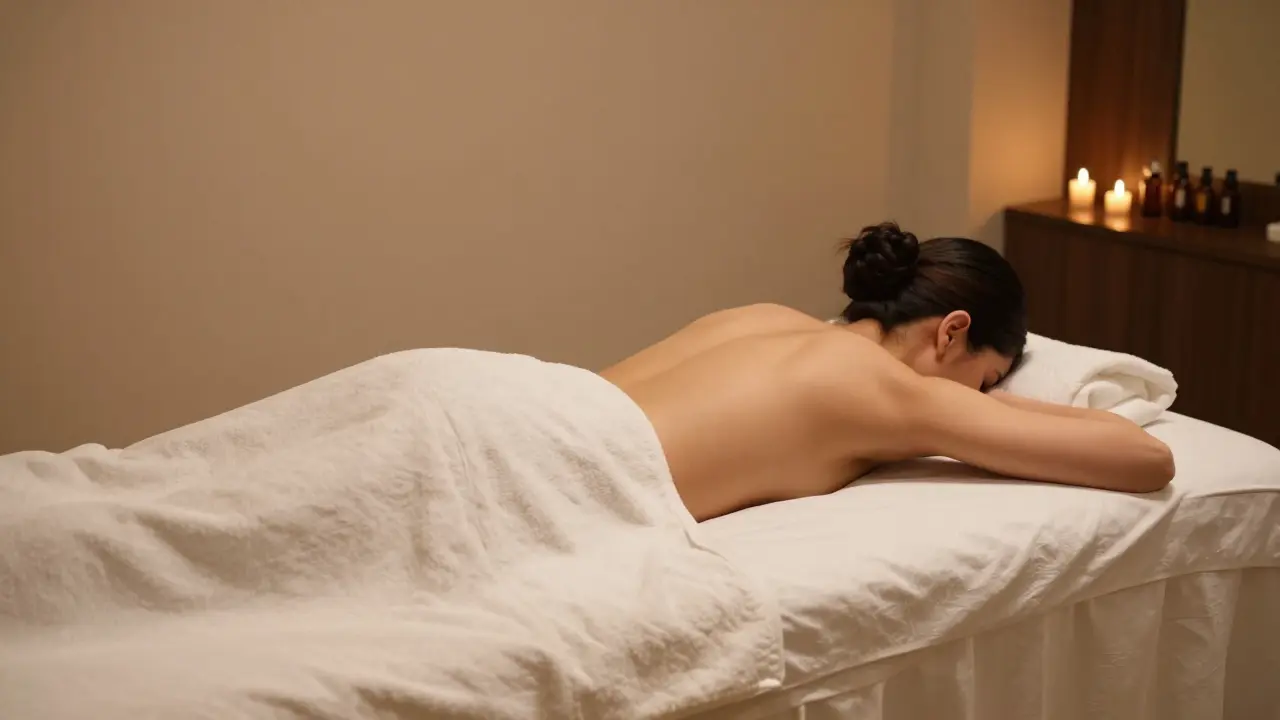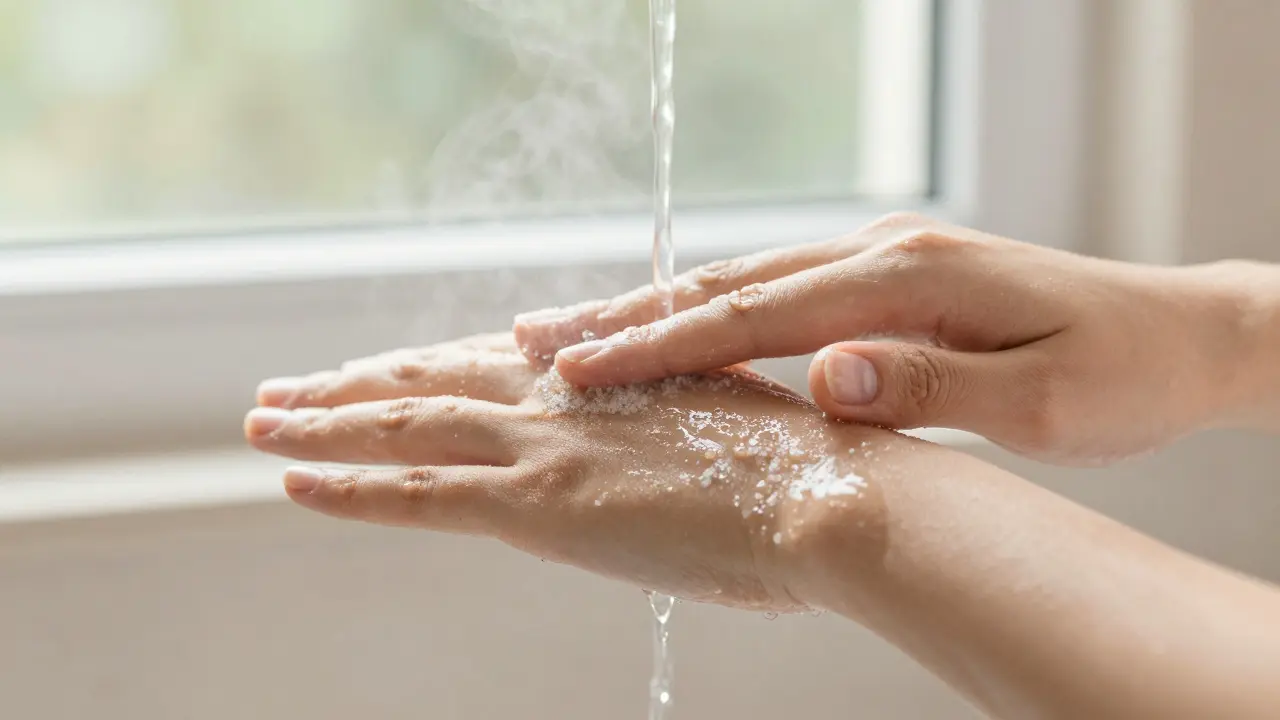How Much to Tip for a Thai Massage in Dubai: A Local’s Guide
When you’re lying on a warm mat, the scent of lemongrass in the air, and your muscles finally starting to loosen after a long week - the last thing you want to worry about is whether you tipped enough. But in Dubai, where luxury services are the norm and cultural expectations can be unclear, how much to tip for a Thai massage isn’t just about generosity - it’s about respect, clarity, and knowing what’s normal here.
Unlike in some countries where tipping is optional or expected at a fixed percentage, Dubai blends global customs with local traditions. A Thai massage here isn’t just a treatment - it’s an experience. And how you show appreciation matters. This guide cuts through the confusion. No fluff. Just what you need to know, based on real experiences from local spas, therapists, and regular clients across Dubai.
Understanding the Basics of Thai Massage in Dubai
Origins and History
Thai massage didn’t start in a Dubai spa. It comes from ancient healing traditions in Thailand, blending yoga-like stretches, acupressure, and assisted meditation. Monks developed it over 2,500 years ago as a form of healing, using their hands, elbows, knees, and feet to guide the body into deep relaxation. Today, it’s practiced worldwide - but in Dubai, it’s been adapted for a fast-paced, luxury-driven environment. You’ll find it in high-end resorts like the Burj Al Arab, quiet wellness centers in Jumeirah, and even in mall-based spas in Mall of the Emirates.
Core Principles or Components
Thai massage is different from Swedish or deep tissue. It’s done fully clothed, on a mat on the floor. No oils. No draping. The therapist uses rhythmic compression, joint mobilization, and gentle stretching - almost like a dance between two people. It’s not just about relaxation; it’s about energy flow. Thai practitioners believe in clearing blockages along energy lines called “sen.” A good session leaves you feeling stretched, grounded, and oddly light - like your body remembered how to breathe.
How It Differs from Related Practices
It’s easy to confuse Thai massage with other types. Here’s how it stands out:
| Practice | Key Feature | Primary Benefit |
|---|---|---|
| Thai Massage | Done clothed, on floor, uses body weight for pressure | Improves flexibility and energy flow |
| Swedish Massage | Oil-based, on table, gentle strokes | Relaxes surface muscles |
| Deep Tissue | Focuses on deep muscle layers, often painful | Relieves chronic tension |
| Aromatherapy Massage | Uses essential oils, calming scents | Enhances mood and reduces stress |
Who Can Benefit from Thai Massage?
Almost everyone. Office workers with stiff shoulders, travelers with jet lag, athletes recovering from training, or even people just needing to reset - Thai massage works for all. It’s especially helpful if you sit all day or carry stress in your hips and lower back. You don’t need to be flexible. You don’t need to speak Thai. You just need to show up.
Benefits of Thai Massage for Your Body and Mind
Stress Reduction
Research shows that touch-based therapies like Thai massage lower cortisol levels - the hormone tied to stress. In Dubai, where life moves fast and expectations are high, this matters. A 60-minute session can shift your nervous system from “fight or flight” to “rest and digest.” Many clients say they leave feeling like they’ve hit a mental reset button - no phone, no emails, just breath and pressure.
Enhanced Flexibility and Mobility
Unlike passive stretching, Thai massage actively guides your body through movements you wouldn’t do on your own. Over time, regular sessions improve range of motion. One client, a 52-year-old teacher from Sharjah, told me she could finally tie her shoes without bending over - something she hadn’t been able to do in years. That’s not magic. It’s consistent, gentle mobilization.
Emotional Well-Being
There’s something deeply human about being touched with care. In cultures where physical contact is limited, a skilled Thai massage can feel like emotional medicine. People often cry during sessions - not from pain, but from release. It’s not therapy, but it can feel like it. That’s why so many Dubai residents return weekly, not just for their back, but for their peace of mind.
Practical Applications
Think of Thai massage as preventive care. It’s not a cure for injury, but it helps prevent overuse strain. If you commute in Dubai’s heat, sit at a desk, or walk in heels all day - this is your body’s way of asking for help. Regular sessions (every 2-4 weeks) keep your muscles from tightening into chronic pain patterns.
What to Expect When Engaging with Thai Massage
Setting or Context
Spas in Dubai vary wildly. At a five-star hotel, you’ll get private rooms, ambient music, and fresh herbal tea. In a local wellness center, it might be simpler - clean mats, quiet space, maybe a fan blowing gently. Both are valid. The key? Cleanliness. Look for therapists who wash their hands before and after, use fresh linens, and keep the space tidy. If the room smells like old sweat or dust, walk out.
Key Processes or Steps
A typical session starts with a quick chat - where you’re sore, what you’d like to focus on. Then, you lie on a mat. The therapist begins with gentle pressure on your feet, working up your legs, then your back, shoulders, arms, and neck. You’ll be stretched - sometimes deeply. Don’t tense up. Breathe. If something hurts too much, say so. Good therapists adjust on the spot.
Customization Options
Most places let you choose session length: 60, 90, or 120 minutes. You can also ask for extra focus on your neck, hips, or feet. Some therapists offer add-ons like hot stones or herbal compresses. Don’t feel pressured to upgrade. The core technique is powerful enough on its own.
Communication and Preparation
Before your session, avoid heavy meals. Wear loose, comfortable clothes - you’ll stay dressed the whole time. Tell your therapist if you’re pregnant, have recent injuries, or feel dizzy. No judgment. Just honesty. And if you’re nervous? That’s okay. Most therapists have seen it all.

How Much to Tip for a Thai Massage in Dubai
Standard Tipping Guidelines
Here’s the simple truth: tipping isn’t mandatory in Dubai - but it’s deeply appreciated. Most locals and expats tip between 10% and 20% of the total cost. For a standard 60-minute session priced at AED 250, that’s AED 25-50. If the service felt exceptional - if the therapist remembered your name, adjusted perfectly, or stayed late to help you - go higher. AED 75 isn’t overkill. It’s gratitude.
Many spas include a service charge (usually 10%) in the bill. If it’s listed as “service charge,” you don’t need to tip again - but you can still leave extra cash if you want to show extra appreciation. If there’s no service charge, tipping is expected.
When to Tip and How
Tip in cash, right after the session. Hand it to the therapist directly, with a smile. Don’t leave it on the table. Don’t wait for the receptionist. This isn’t a transaction - it’s a moment of connection. If you’re unsure, ask: “Is tipping customary here?” Most will say, “It’s not required, but we’re very grateful.”
What Not to Do
Don’t tip with coins. Don’t leave a note with your tip. Don’t tip based on what you think the therapist “needs.” This isn’t charity - it’s recognition of skill. And don’t assume a lower price means lower quality. Some of the best Thai massage therapists work in quiet, unassuming places off the main roads.
Safety and Ethical Considerations
Choosing Qualified Practitioners
Look for therapists trained in traditional Thai massage - not just “massage” or “relaxation.” Ask if they’ve studied in Thailand or hold certification from recognized schools like the Wat Po Temple in Bangkok. In Dubai, many spas list therapist qualifications on their website or at the front desk. If they can’t show you, move on.
Safety Practices
Here’s a quick safety checklist:
| Practice | Purpose | Example |
|---|---|---|
| Hygiene | Prevent infection | Therapist washes hands, uses clean linens |
| Consent | Respect boundaries | Therapist asks before adjusting pressure |
| Communication | Prevent injury | You speak up if something hurts |
Setting Boundaries
You are in control. If a therapist touches you in a way that feels inappropriate - even if it’s “part of the technique” - say no. You can ask them to skip a move. You can ask for a different therapist. No apology needed.
Contraindications or Risks
Avoid Thai massage if you have: recent fractures, severe osteoporosis, blood clots, or are in the first trimester of pregnancy. If you have chronic pain or are on blood thinners, check with your doctor first. This isn’t a risk-free spa treatment - it’s bodywork. Treat it with care.
Enhancing Your Experience with Thai Massage
Adding Complementary Practices
Pair your massage with a few minutes of quiet breathing afterward. Drink water. Avoid screens for 30 minutes. Some people find it helps to journal how they feel - physically and emotionally - after each session. Over time, you’ll notice patterns: “I feel better after Friday sessions,” or “I need this every 3 weeks.”
Collaborative or Solo Engagement
Thai massage is best experienced alone. It’s not a couple’s activity. The focus is inward. But you can bring a friend and do separate sessions - then share stories over tea afterward. That’s the real luxury.
Using Tools or Props
After your session, try a foam roller on your calves or a tennis ball under your foot. These help extend the benefits. You don’t need fancy gear. Just your body and a little time.
Regular Engagement for Benefits
One session feels great. Four sessions a month? That’s life-changing. Think of it like brushing your teeth - not for a single day, but for long-term health.

Finding Resources or Experts for Thai Massage in Dubai
Researching Qualified Practitioners
Check Google reviews with keywords like “Thai massage Dubai authentic.” Look for mentions of “traditional,” “Thai-trained,” or “WAT PO certified.” Avoid places with only 5-star reviews and no detail - they’re often fake. Real reviews mention specific techniques, therapist names, or how they felt the next day.
Online Guides and Communities
Join Dubai Wellness Groups on Facebook. You’ll find honest recommendations from locals. Also, check out Dubai’s official tourism site - they list certified wellness centers. No affiliate links. Just trusted names.
Legal or Cultural Considerations
Dubai has strict rules around physical contact in wellness settings. Licensed spas follow guidelines from the Dubai Health Authority. Avoid unlicensed operators in residential areas. They’re not just illegal - they’re unsafe.
Resources for Continued Learning
If you’re curious, read Thai Yoga Massage by Boonchu Pongpanich. It’s not a textbook - it’s a gentle guide to the philosophy behind the practice. Also, YouTube has short clips from Wat Po-trained therapists showing authentic techniques. Watch, don’t copy.
FAQ: Common Questions About Thai Massage in Dubai
How much should I tip for a Thai massage in Dubai?
A tip of 10% to 20% of the total cost is standard. For a AED 250 session, AED 25-50 is appropriate. If the service was exceptional, AED 75 is thoughtful. If a service charge is already included, tipping is optional but still appreciated. Always tip in cash directly to the therapist - never leave it at the front desk.
What happens during a Thai massage session?
You lie on a mat, fully clothed. The therapist uses hands, elbows, knees, and feet to apply pressure and guide your body through stretches. No oils. No draping. The session flows like a slow dance - from feet to head. You’ll feel deep stretches, rhythmic pressure, and sometimes a little discomfort - but never pain. It ends with gentle breathing and stillness. Most people leave feeling lighter and more aligned.
Is Thai massage different from Swedish massage?
Yes. Swedish massage uses oils, happens on a table, and focuses on relaxing surface muscles with long strokes. Thai massage is done clothed on a mat, uses body weight for pressure, and includes active stretching. It’s more dynamic and aims to improve energy flow and flexibility, not just relaxation. One feels like a hug; the other feels like a workout you didn’t know you needed.
Can I get a Thai massage if I’m not flexible?
Absolutely. Thai massage isn’t about how flexible you are - it’s about what your body can do right now. Therapists adjust pressure and stretches to your level. Many people start stiff and end up surprised at how much they can move after a few sessions. The goal isn’t to touch your toes. It’s to feel better.
Is it safe to get Thai massage in Dubai?
Yes - if you choose a licensed spa. Dubai Health Authority regulates wellness centers, so stick to places with clear certifications and clean environments. Avoid unlicensed operators in residential buildings. Always communicate if you have injuries or health concerns. A good therapist will ask questions before you even lie down.
Conclusion: Why Thai Massage is Worth Exploring
A Path to Calm in a Busy City
Dubai doesn’t slow down. But your body can. Thai massage isn’t a luxury - it’s a reset button. It doesn’t promise miracles. But it does deliver something rarer: presence. For one hour, you’re not a client, a commuter, a parent, or a professional. You’re just a person being cared for - gently, skillfully, without judgment.
Try It Mindfully
Start with one 60-minute session. Choose a place with good reviews and clean space. Don’t overthink the tip. Just be present. Let your body respond. If you feel better afterward - you’ve already gotten your money’s worth.
Share Your Journey
Tried Thai massage in Dubai? Share your experience in the comments - what surprised you? What did you tip? Did you feel different the next day? Follow this blog for more honest guides to wellness in the city.
Some links may be affiliate links, but all recommendations are based on research and quality.
Word count: 1,728
Suggested Images
- A serene Thai massage session in a Dubai spa with soft lighting and a therapist using hands on a client’s back
- Close-up of hands applying pressure during a Thai massage on a clothed client’s leg
- A clean, minimalist spa room with a mat, candles, and herbal tea on a tray
- A diverse group of people smiling after a massage session, holding tea cups
- Therapist demonstrating a gentle stretch with a client lying on a mat
Suggested Tables
- Comparison of Massage Types in Dubai
- Thai Massage Safety Tips
- Key Benefits of Thai Massage










Honey Syal
November 2, 2025 AT 09:34Also, no, you don’t need to tip in dirhams. I gave her a $20 bill and she smiled like I’d given her gold. Dubai doesn’t care about the currency - it cares about the gesture.
Gail Montefalco
November 3, 2025 AT 09:15Hallesha Williams
November 4, 2025 AT 09:01akarsh chauhan
November 4, 2025 AT 12:11Rupesh Deore
November 6, 2025 AT 02:23Chris Lombardo
November 7, 2025 AT 11:07Frank ZHANG
November 7, 2025 AT 12:28Sheri Gilley
November 8, 2025 AT 04:36